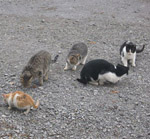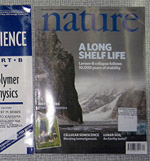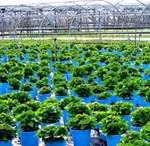Using "landscape limnology" to make freshwater conservation more effective
 Freshwater,
Freshwater,  Planning
Planning Rocky shore of Lake Huron taken from east of Port Dolomite, MI in the upper peninsula.Scientists have developed a pioneering, comprehensive approach that makes conserving and managing freshwater lakes, streams and wetlands more integrated and effective.
"We call our approach landscape limnology," said Patricia Soranno, Michigan State University professor of fisheries and wildlife. "It's a new way to study freshwater that considers all freshwaters together – lakes, rivers and wetlands – as they interact with one another and with natural and human landscapes. Our goal is to improve our broad understanding of the diversity of freshwater resources and to give freshwater managers science-based tools to manage and protect these bodies of water."
The research was published in the June 1 issue of the journal BioScience.
Michigan has more than 10,000 freshwater lakes larger than 5 acres, 30,000 miles of streams and more than 10,000 square miles of wetlands. State agencies – mainly the Department of Natural Resources and Environment – are charged with the enormous task of managing these freshwater resources to make sure all needs are met, including overseeing fish stocking and fishing regulations; herbicide applications to control aquatic plants; and setting withdrawal regulations and nutrient standards. But with limited budgets, data can be collected on only a small percentage of these aquatic resources.
Landscape limnology uses GIS, data from satellites and aerial photos, including information on land use, soils and geology around the freshwater resources. This information is combined with data collected in the field, such as fish population numbers or nutrient levels in the water to create models that decision-makers can use to decide on the best management and conservation strategies to meet their goals.
Landscape limnology differs from traditional limnology by looking at freshwater resources as an integrated part of a complex landscape of terrestrial and aquatic elements rather than considering each lake or wetland as an isolated, single entity.
Soranno and co-authors Mary Bremigan and Kendra Spence Cheruvelil said many current and emerging environmental issues have causes that range in scale from local to global.
Land-use change, exotic species invasions and climate change are all complex issues linked in ways that only can be understood by taking an approach that includes all these scales as well as freshwater, terrestrial and human landscape information.
"A landscape approach that considers what's happening at both the local, water body scale and at the broader regional scale is really the only way to study these types of issues," Cheruvelil said. "If you look at only one ecosystem in isolation, you don't see the whole picture."
"The landscape limnology framework makes it easy to run several complementary models at the same time," added Bremigan. "Right now, the people who manage fish use one model and the people who manage nutrient levels use a completely different model and they're rarely compatible, so it can be difficult to see how changes in one affect the other. Landscape limnology models make it easier to see the relationships between all the variables."
The state began using the scientists' landscape limnology approach in 2006 to set and manage nutrient levels in the state's freshwater lakes and streams and the managers are very pleased with the results.
"The state of Michigan had to present our approach to U.S. Environmental Protection Agency officials and they gave us a very favorable review," Soranno said. "Now we're starting to work with agencies outside Michigan."
--Reprint of research summary from study authors and Michigan State University.




Reader Comments